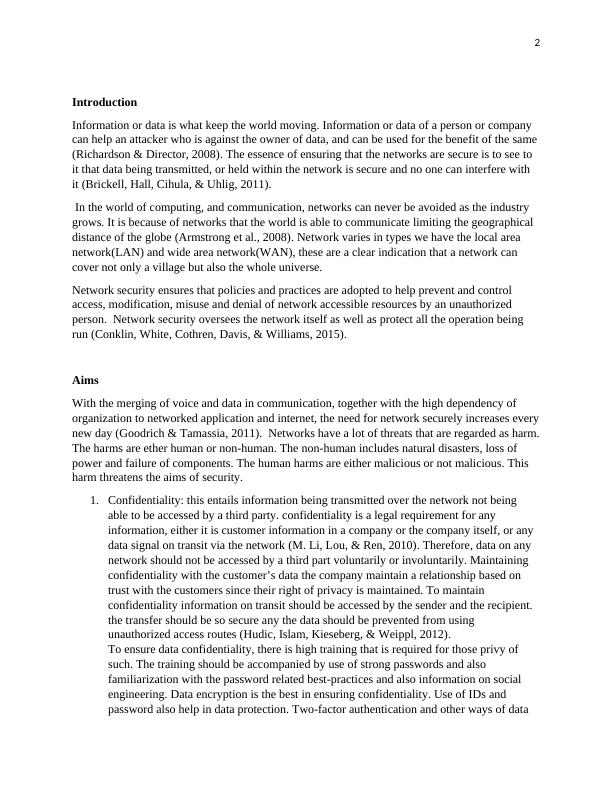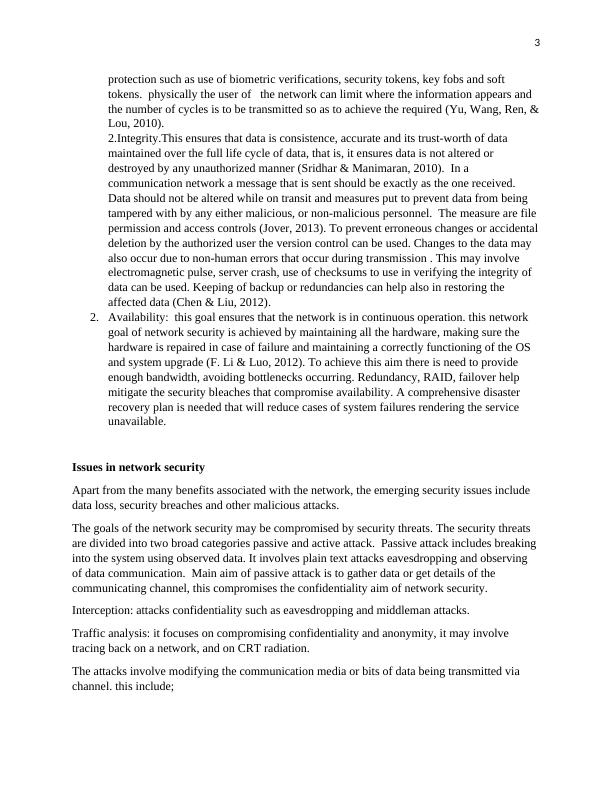Network Security: Importance, Aims, Issues, Current Techniques, and Future Solutions
The evolving technologies of cloud computing will have a significant impact on the future of network security. This research paper explores the security risks and challenges associated with cloud computing and the potential impact on businesses.
8 Pages3208 Words244 Views
Added on 2023-06-07
About This Document
This article discusses the importance, aims, issues, current techniques, and future solutions of network security. It covers topics such as confidentiality, integrity, availability, passive and active attacks, and current methods like cryptography and firewalls.
Network Security: Importance, Aims, Issues, Current Techniques, and Future Solutions
The evolving technologies of cloud computing will have a significant impact on the future of network security. This research paper explores the security risks and challenges associated with cloud computing and the potential impact on businesses.
Added on 2023-06-07
ShareRelated Documents
End of preview
Want to access all the pages? Upload your documents or become a member.
Wireless Network and Security
|16
|4456
|155
Cyber Security in Corporate Governance: Ways to Improve Cyber Resilience and Integration with Cyber Security
|12
|3215
|375
Communication Network Security
|14
|2944
|307
Cyber-security Assesment Report
|4
|890
|8
Unauthorized Access to Computer Systems: Problem and Solutions
|4
|832
|68
CIA Triad, Authorization, Authentication, Ethics, and Security SDLC in Information Technology Management
|6
|1938
|340



